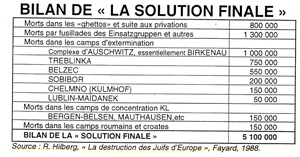1. A map of the liberation of Nazi camps by Soviets, Americans and British
 Click image to enlarge
Click image to enlarge
Questions
Presentation and analysis of the historical context
Here is an extract written by Ferdinando Camon, Conversations avec Primo Levi, Gallimard, 1987:
« P. Levi – Le Lager servait à trois choses. Il était né au tout, en début 193, avec Orianenburg, je crois, le premier des camps nazis, qui étaient encore des modèles réduits ; ils contenaient cinq à dix mille personnes, leur but était de mettre fin à la résistance politique, surtout à celle des communistes : ils étaient nés comme Knochenmühlen, « moulins à os », conçus pour rouer de coups, broyer, détruire, démoraliser, faire disparaître les leaders : en premier lieu, les communistes, puis les sociaux-démocrates, les catholiques, les protestants et quelques juifs, en somme ceux qui étaient des épines dans la chair du nazisme naissant. C’est ce qu’ils sont restés assez longtemps jusqu’au début de la guerre. Avec début de la guerre, et l’invasion de la Pologne, les Allemands mettent la main sur les sources biologiques du judaïsme » (ce sont les mots d’Eichmann). Et d’autres camps naissent, très différents de ceux-ci, car ils ne sont plus destinés à terroriser les adversaires politiques, mais à détruire les juifs. Ces camps polonais (…) étaient des camps « sans issue ». Ils fonctionnent sans interruption à partir de 1941-1942 jusqu’à la fin de 1943. A la fin de 1943, après Stalingrad, le manque de main d’œuvre en Allemagne se fait tellement sentir qu’il devient indispensable d’utiliser tout le monde, même les juifs. C’est dans cette période qu’on construisit Auschwitz, un camp hybride, ou plus exactement, un « empire » hybride de camps : extermination plus exploitation, ou plutôt : extermination par le moyen de l’exploitation. C’est à cela que je dois d’avoir survécu, c'est-à-dire au fait d’être arrivé, comme tous les juifs italiens, assez tard et d’avoir été inséré dans le système de production. C’est donc le troisième but : avoir un réservoir de main d’œuvre à bas prix et même gratuite. On avait calculé de façon très rationnelle une survie de trois mois (…) Donc, pour résumer, les Lager ont trois buts : terreur, extermination, main d’œuvre. »
Links
- http://www.fmd.asso.fr/web/index.php?id_cat=1&lang=lang1: Created in 1990, the Foundation for the Memory of the Internment has the objective to perpetuate the memory of the Confinement and the Internment beyond the generation of witnesses. It makes educational tools (DVD, books, files of the National Contest of Resistance and Internment…). It has also conceived an exhibition on the history of the liberation of concentration camps whose 30 panels are presented in the educational part of the website.
- http://www.struthof.fr/fr/le-kl-natzweiler/: This website offers an historical account of the only KL located on the present French territory (chronology, map of the camp, testimonials, virtual tour…) and a presentation of the “European Center of Deported Resistant” which objective is to transmit the memory and the history of the Resistance and the Nazi concentration camp system throughout Europe.
Answers
- Dachau, Buchenwald, Mauthausen, Ravensbrück or any other camps which name is preceded by a square...
- Auschwitz-Birkenau, Treblinka, Belzec, Sobibor, Chelmno, Maidanek. These extermination camps are located in Eastern Europe on the present territory of Poland.
- The armies who freed Nazi camps in Eastern Europe were Soviet armies (Red Amy) and those who freed west camps are American and British armies.
- On the 23rd of November 1944, the KL Natzweiler (Struthof) was the first camp discovered by Allies armies in the west of Europe but it has been emptied of its prisoners by the Nazi from September. This camp was located in Alsace (France).






Presentation
Since their arrival in power in 1933, Nazi leaders established concentration camps (Konzentrationlager – KL or KZ). On the 31st of July 1933, 27 000 persons are interned in about 70 camps. The existence of these camps was not a secret because they were used for the policy of Nazi terror. Crimes committed there were denounced by the anti-Nazi.
Germany and then occupied territories built numerous concentration camps in which Nazi shut up political opponents (freedom fighters) with those they described as “asocial” (common right criminals, Gypsies, conscientious objectors, homosexuals).
After the invasion of Soviet Union, the systematic destruction of starved Jews began in the ghettos. They were shot by the Einzatzgruppen and were gassed in extermination camps which were “death centers” (Chelmno, Treblinka, Sobibor, Belzec, Maïdanek and Auschwitz-Birkenau).
From 1944, when the Allies freed Europe from the Nazi occupation, they discovered with fright the crimes against Humanity that were perpetuated in concentration camps and the reality of the Genocide which extermination camp with their gas chambers had been one of the instruments.